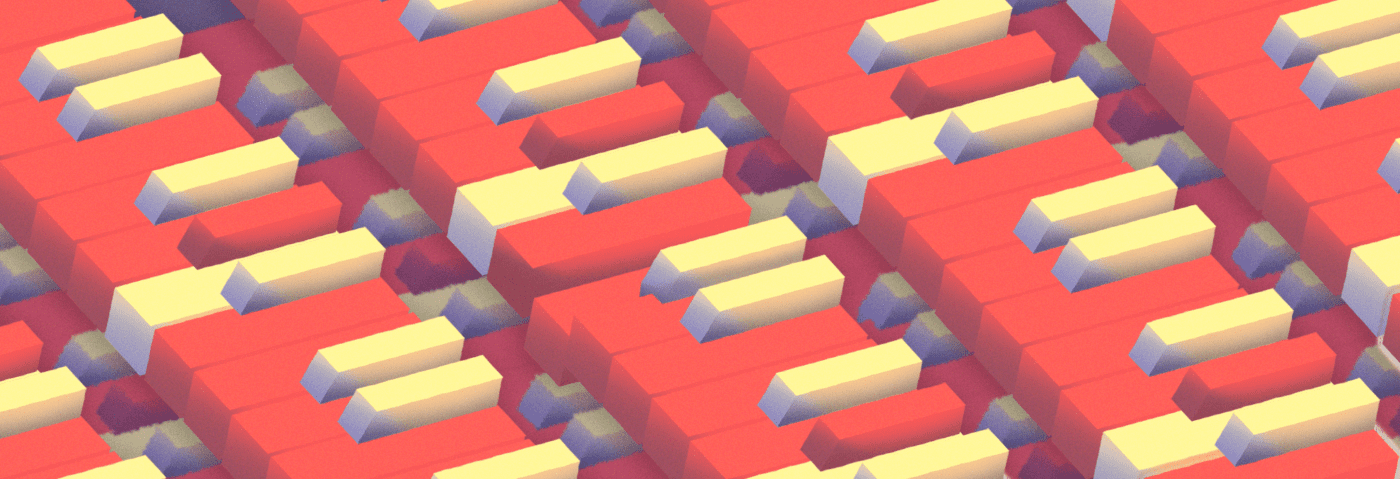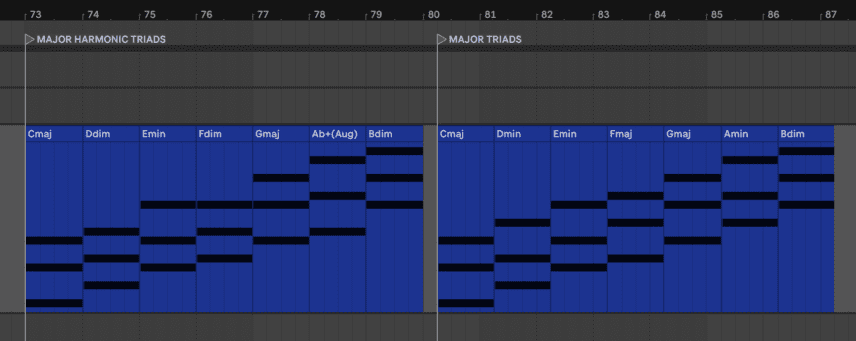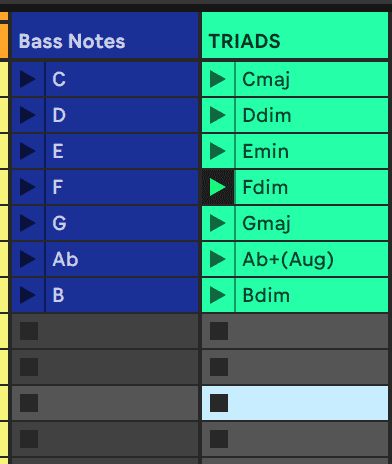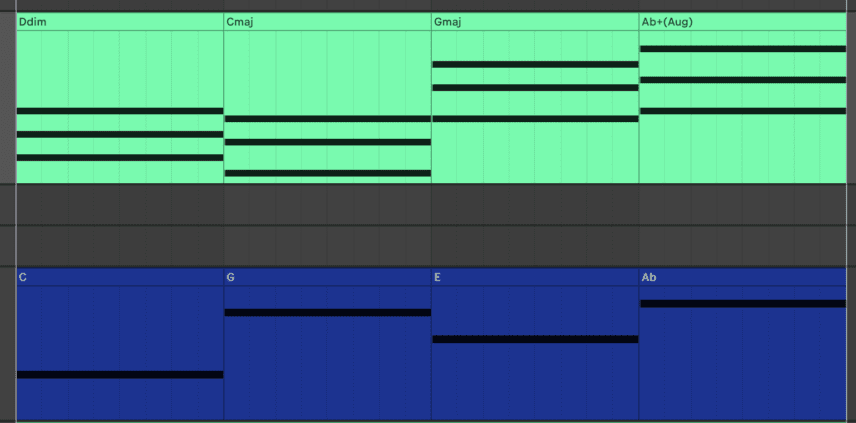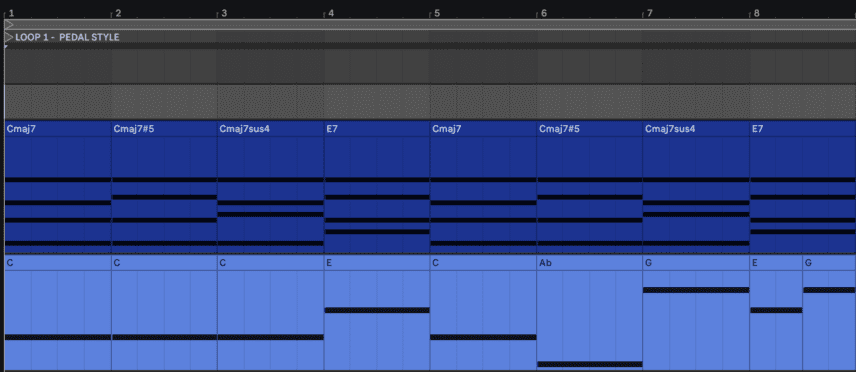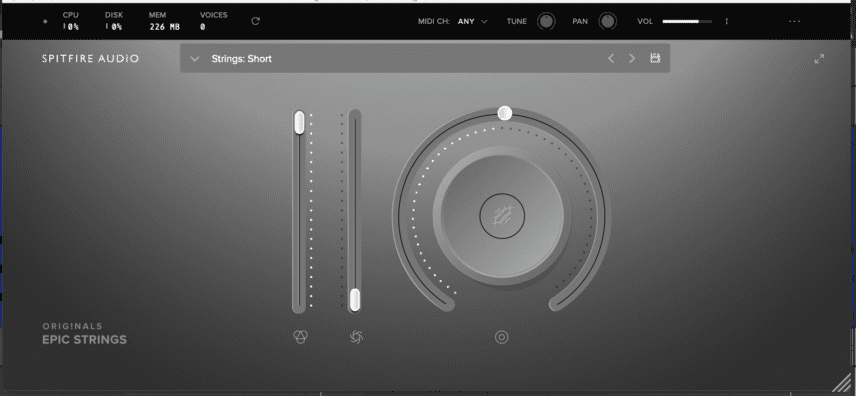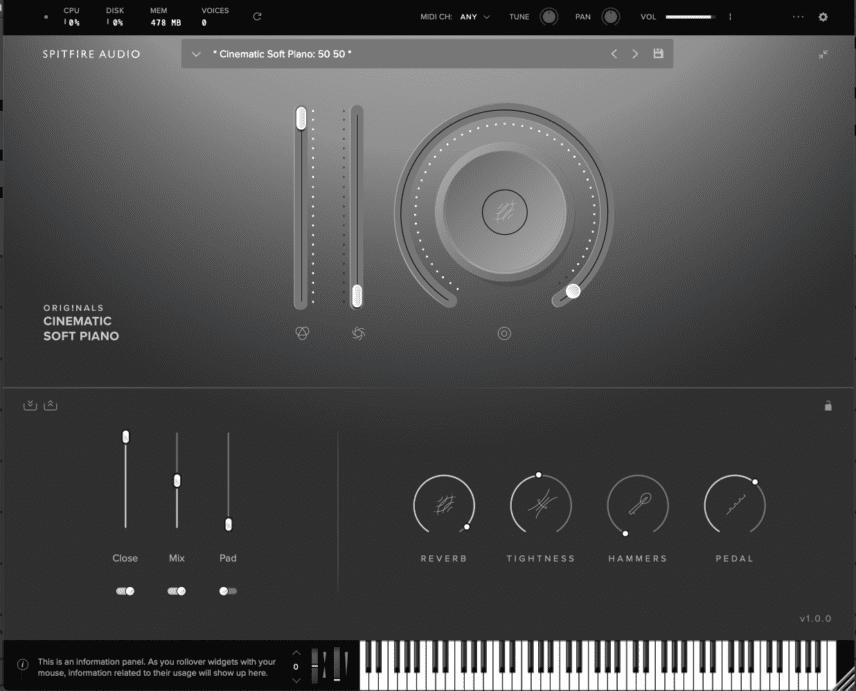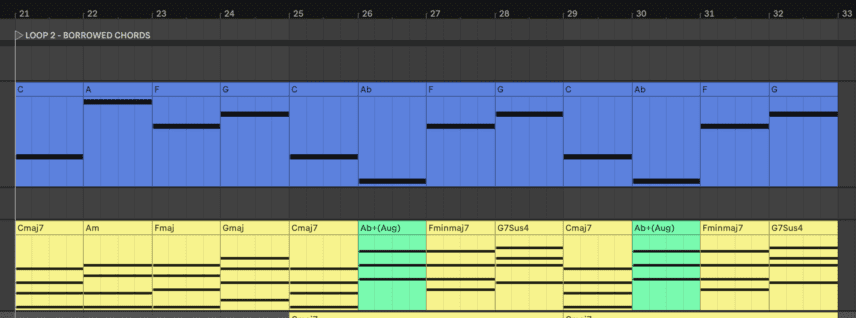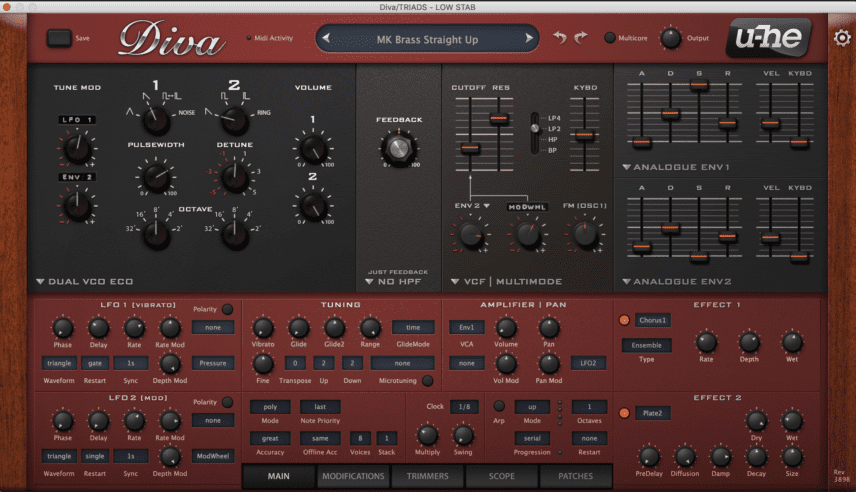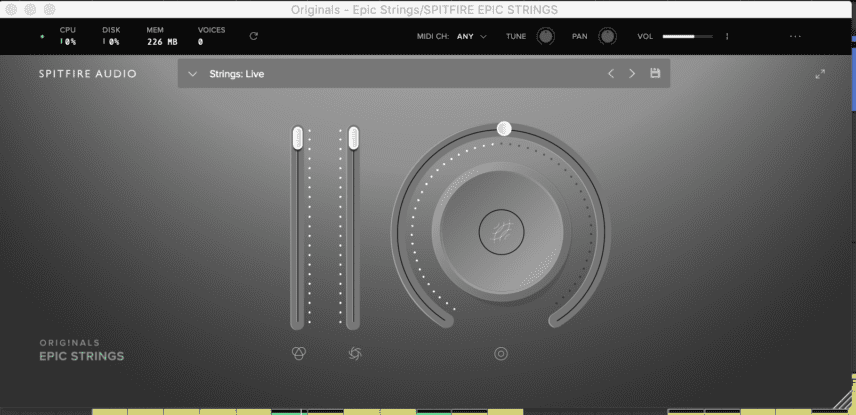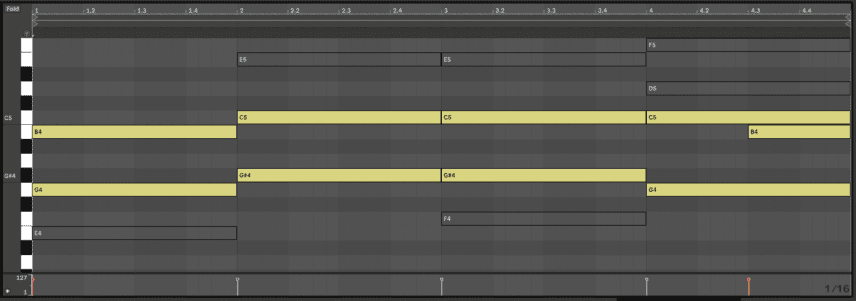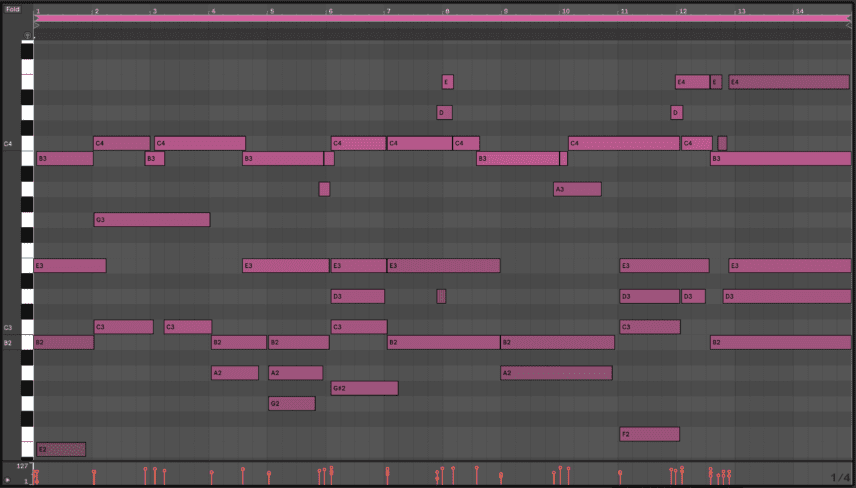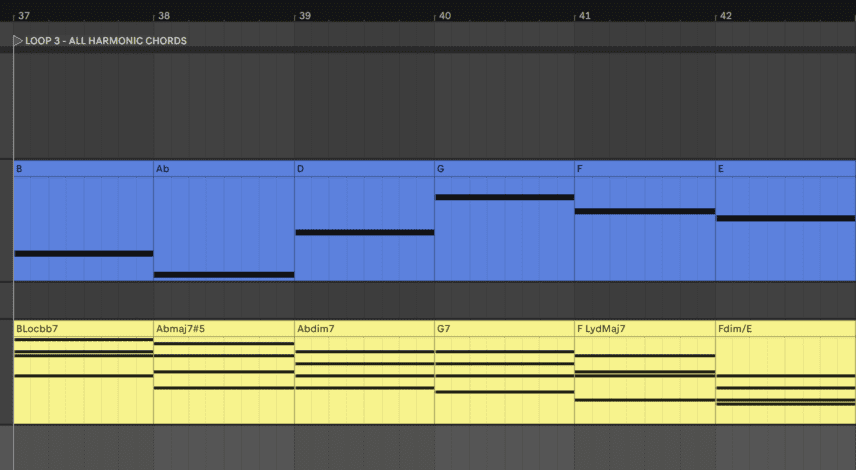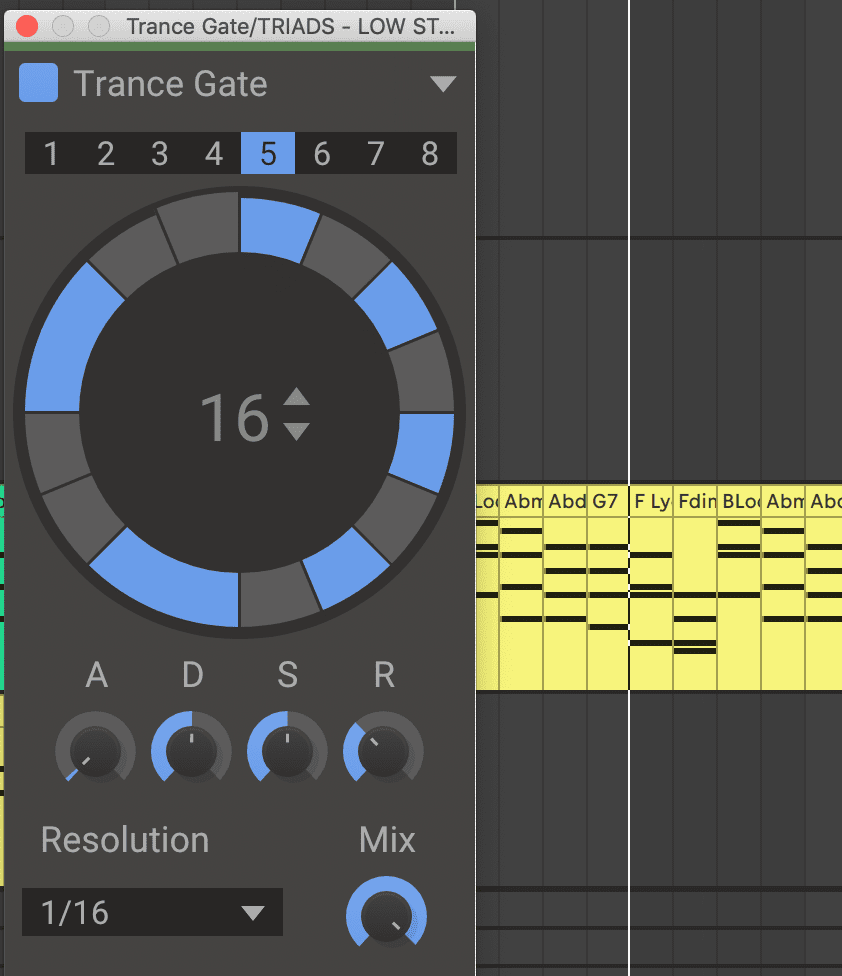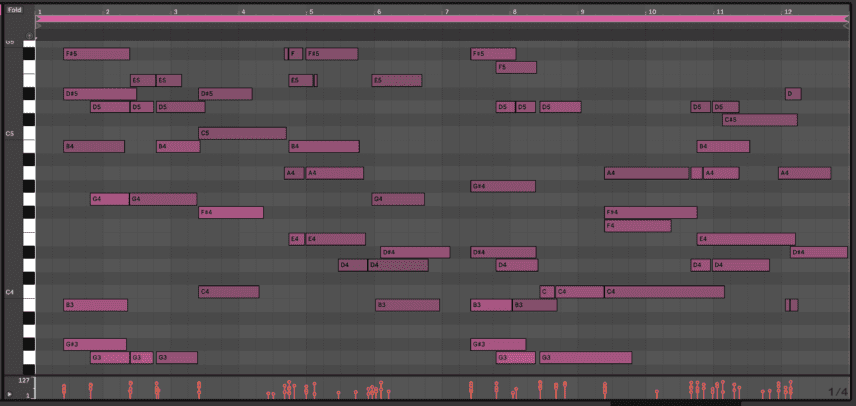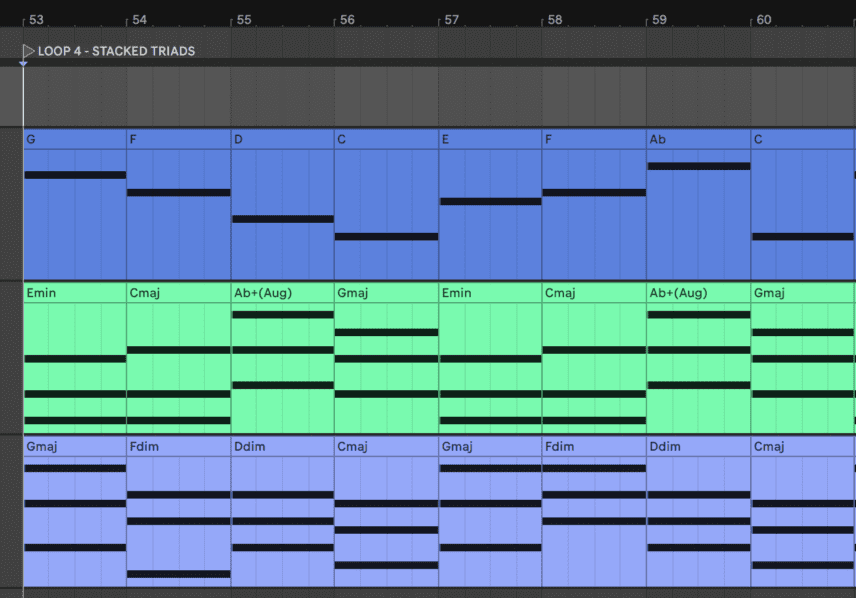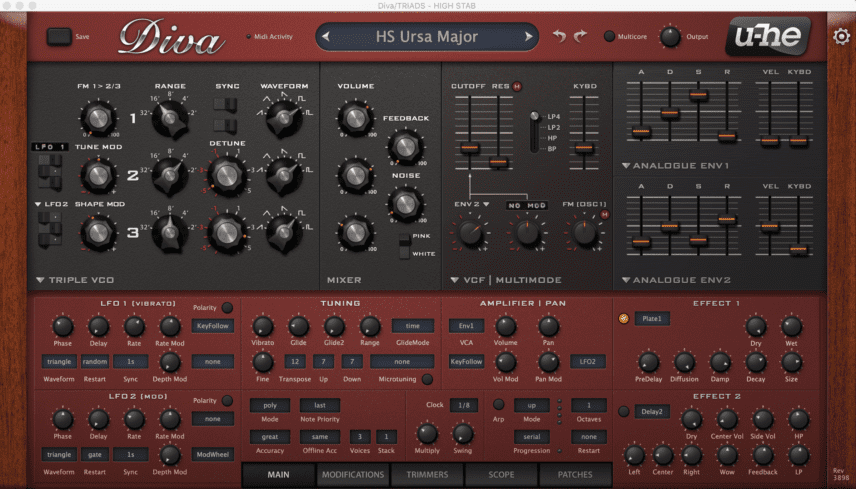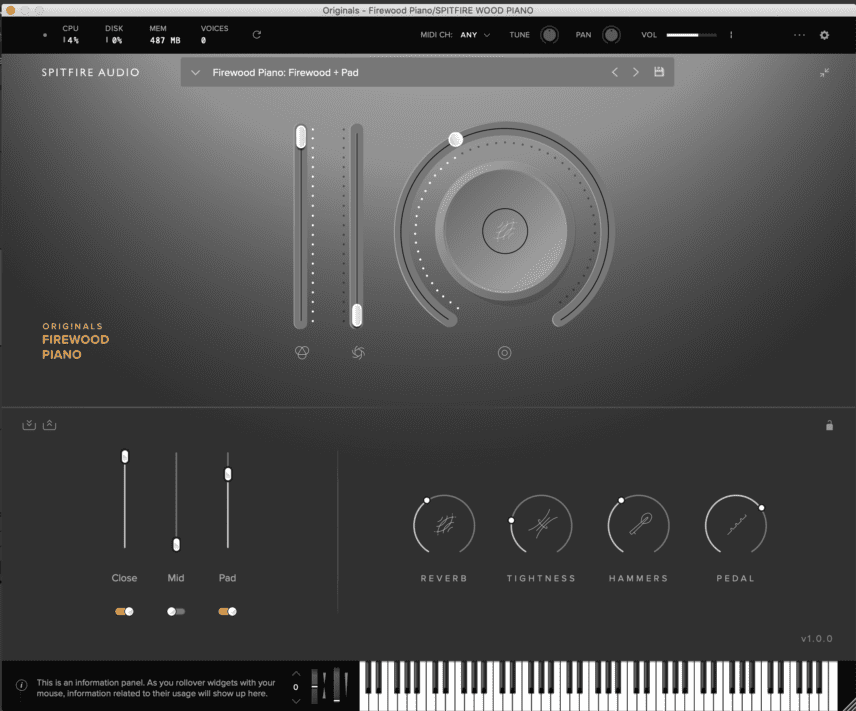In this installment of Passing Notes, we break down a universal workflow for analyzing unconventional scales and incorporating them into productions.
Last year we published an article about two hackers who used an algorithm to generate every single possible melody, copyrighted them and released the file to the public. These kinds of stories and the ever-looming possibility of AI-generated music are modern-day realities that have producers exploring new ways to achieve a unique sound – both sonically and harmonically. A shortcut for doing this is using scales that roughly 99% of producers just don’t use.
Instead of making a long list of different Japanese, Arabic, European and Indian scales, we are going to only break down one unconventional scale in order to demonstrate a workflow that you can apply to any scale you choose to work with. The scale we’ve chosen is the Harmonic Major scale. First, we’ll briefly introduce the scale and then move on to extracting a variety of advanced chord voicings from it. In the last section, we’ll use the chords and the notes of the scale in four different chord progressions.
Click on any image to see a larger version. You can download the project session here .
Here are the four examples from the final section:
The Harmonic Major Scale
It is said that the harmonic major scale corresponds to one of the ragas (scales) from Southern Indian Carnatic Music, which is one of the main subgenres of Indian classical music. It entered Western music in the Common Practice Period between 1650 and 1900 when composers were experimenting with new musical patterns and styles.
On paper, it is not so different from the major scale that we all know and love as it only changes one of its seven notes to a flat note. This is precisely why we’ve selected this scale – to underline the fact that using a less common scale with only a tiny note change can open the door to many new harmonic possibilities.
The C harmonic major scale goes:
C – D – E – F – G – Ab – B
As you can see, the only change compared to a normal all-white C major scale is that the sixth note A is flattened to Ab. The most important result of this is that now there is a whole gap of three semitones (a major 3rd interval) between the sixth and seventh notes. Here’s how the scale sounds:
Those last three notes probably had you thinking of many big-budget Hollywood films set in the Middle-East and there is no denying that these kinds of scales are used a lot for that purpose. They are also used a lot in what some call ethnic techno or ethnic electronic music to evoke the feeling of a region in the music. Nonetheless, we are going to deliberately avoid these more limiting uses of the scale in order to retain a Western electronic music style.
The first thing to do when you’re face to face with a new scale is to lay out the chords. As with any other scale, the triads are a combination of three notes, two steps apart from each other in scale.
For example, C’s triad is C – E – G, a C major triad.
D’s triad is D – F – Ab, a D diminished triad.
Ab’s triad is Ab, C, E, an augmented triad.
Here’s how all seven of the C harmonic major triads sound consecutively, followed by the triads in the more conventional C major scale.
You’ll notice that the harmonic major has more diminished triads and an augmented triad compared to the C major scale’s only B diminished triad (this is usually converted to a B minor in popular music anyway in order to avoid the dissonant-sounding diminished chord).
We’re going to approach working with these triads and all of the chords in this article by laying them out as one-bar clips on a MIDI instrument channel in Live’s Session View. This allows for quickly jumping between chords to find good combinations. We also loaded up another MIDI channel and inserted the individual bass notes as one-bar loops as well. This is because we want to use slash chords. For example, the G major triad playing with a bass doing a C note underneath would be a Gmaj/C chord.
Try experimenting with these for a bit but don’t worry, we’re going to move on to much fancier chords in the next step! We came up with the following progression by just mixing and matching four of the triads with different bass notes:
Ddim/C -> Cmaj/G -> Gmaj/E -> Ab+
We only avoided using a slash chord in the fourth Ab augmented chord as we had the bass play the triad’s root Ab.
Lots of people give up on non-conventional scales after identifying the triads and not being able to find great combinations because jumping between triads is sonically very limiting and the dissonant chords really stand out.
The secret lies in adding the 7th notes, using slash chords and stacking the chords to find more interesting combinations. Though we’ll mainly be focusing on 7th chords in the next sections, we’ll explore an alternative use for the triads toward the end of the music examples.
Extracting Advanced Chord Voicings
We’re going to identify about 20 more complex chords that we will then proceed to add to Session View in Ableton Live as individual clips. This section’s format will be a list of the chords formed using only notes from C Harmonic Major, followed by a short explanation on how they came to be and/or how they get their name. The MIDI files for all of the chords are included in the project folder we’ve provided a download link for at the start of the article.
Be sure to save these chords and make it a habit to expand your one-bar MIDI chord library! If you approach all new scales you encounter this way you do not need any advanced music theory knowledge to use them because you can lay them out as MIDI clips and find your own unique combinations.
- C Major 7 (C – E – G – B)
B is the major 7th interval of C so when added to the C major triad we get a major 7th chord. - C Major 7 #5 (C – E – Ab – B)
C major chords usually have a G but we also have an Ab in this scale so why not use it? Since the fifth degree G is raised a semitone up it is sharpened, hence the #5 in the chord name. - C Major 7 Sus4 (C – F – G – B)
Sus4 chords come about when you add the root note’s perfect fourth to the triad. In this case, we’ve replaced the major 3rd G with the perfect fourth F. - D Diminished 7 (D – F – Ab – B)
In diminished chord shapes the 7th is the major 6th interval of the root. So for D, this is the B note. The D – F – Ab is a plain diminished triad. - D Minor 7 b5 (D – F – Ab – C)
D, F and C are the root, minor 3rd and minor 7th commonly found in a D minor 7 chord. Usually, there is an A as the perfect fifth but in this case, it has been flattened to Ab, hence the b(flat)5. - D Locrian 7 (D – G – Ab – C)
The D and C form a classic minor 7th interval while the notes G and Ab are the perfect fourth and diminished fifth intervals of D. Chords with these intervals are commonly found in the Locrian scale mode. - E Minor 7 (E – G – B – D)
A very common chord shape in house music, the minor 7 is composed of the root note, its minor 3rd, perfect 5th and minor 7th intervals. - E7 (E – G# – B – D)
The classic blues chord comprised of a major triad followed by the root’s minor 7th interval. - F Diminished/E (E – F – G# – B)
A slash chord with an E note played below the F diminished triad. - F Diminished 7 (F – G# – B – D)
An F diminished triad with its major 6th interval D acting as the diminished 7th. - F Minor Major 7 (F – G# – C – E)
The minor comes from the minor 3rd interval between F and G# and the major comes from F’s major 7th E. - F Lydian Major 7 (F – B – C – E)
This one includes the Devil’s interval! A hallmark of Lydian scales and chords are the sharp 4th (usually indicated as #11). In this case, F’s #11 note B is present, along with the perfect 5th C and major 7th E. - G7 (G – B – D – F)
A classic dominant 7th chord voicing with the major triad followed by the root’s minor 7th interval. - G7 Sus4 (G – C – D – F)
A G minor chord with the 3rd interval replaced by the root’s perfect fourth C. - Ab Diminished 7 (Ab – B – D – F)
Another diminished 7th chord. - Ab Diminished Major 7 (Ab – B – D – G)
An Ab diminished triad with the major 7th note G added. - Ab Major #5 (Ab – C – E – G)
This could also be called C Major/Ab because there is a C major triad with the Ab note underneath. - Ab Major7 b5 (Ab – C – D – G)
Ab Major 7 chords usually have a perfect fifth Eb note but that note is not available in this scale so we replace it with its flat fifth D. - B Diminished 7 (B – D – F – Ab)
A B diminished triad with its major 6th interval G# acting as the diminished 7th. - B Locrian Double Flat (bb) 7 (B – E – F – Ab)
This unique chord features the perfect fourth and diminished fifth intervals of B (E and F), common to Locrian chord positions. The ‘double flat’ comes from the fact that the major 6th interval replaces the function of the major or minor 7th interval. This is because both the minor 7th and major 7th intervals of B (A and A#) are unavailable in this scale.
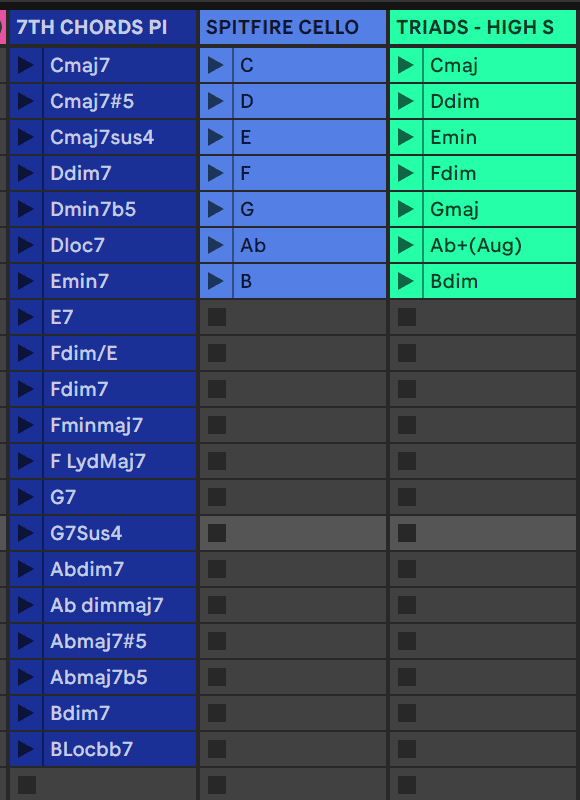
We have all our chord shapes and bass notes ready to go as one-bar MIDI clips in session view so the next step is experimenting to find progressions. In the next section, we’ll look at four approaches to forming progressions with these complex chords.
The Chords in Action
While choosing which chords go with which bass notes (and in which order) we are freely trying different combinations. However, there are a couple of points to keep in mind. The first is avoiding pairing a bass note with a chord that has a note that is one semitone higher. For example, if your bass is playing a G note, try to avoid using a chord that includes an Ab note. This is by no means a concrete rule but the resulting dissonance can be unpleasant.
A second similar point is avoiding a situation where both the bass note’s major 3rd and minor 3rd interval are present in the chord. For example, if your bass note is playing E and the chord above contains G and G#, this will create a prominent dissonance that is actually the hallmark of another lesser-used scale, the Altered scale. Another situation where this could occur in our C Harmonic Major scale is if the bass is playing an Ab note with both its major 3rd interval C and its minor interval B present in the chord.
The last trick, which we will use regularly in the next four examples is inverting the chords. For example, if we have our Cmaj7sus4 chord (C-F-G-B) followed by the E7 chord (E -G#-B-D) we might change the E7 chord’s shape to (D-G#-B-D) so there’s less of a jump in the piano roll. Re-shaping chords to avoid lots of movement across the keyboard can make progressions sound more cohesive and this is a technique we explore further in one of our previous articles about Todd Terje.
Technique 1 – Different Voicings of the Same Chord
The first half of our progression goes Cmaj7 -> Cmaj7#5 -> Cmaj7sus4 -> E7.
The second half changes up the bass notes to go Cmaj7 -> Cmaj7#5/Ab -> Cmaj7sus4/G -> E7 -> E7/G.
For the bass notes, we used the Short preset in Spitifire’s Originals Epic Strings, in which the lower notes on the keyboard feature cellos. For the arpeggiated piano chord we used Spitfire’s Originals Cinematic Soft Piano with Live’s arpeggiator MIDI device and Echo effect.
The main feature of the chord progression is the fact that we’re keeping a C major chord but using different voicings of it. Our chord list contains lots of different chord shapes with the same root notes so instead of changing chords completely, switching between different voicings of the same chord and then changing the bass notes can have great results. The E7 we just added because it worked for the transition.
Technique 2 – Borrowed Chords
There are many classic chord progressions in popular music. One example is I -> vi -> IV -> V. In the key of C Major, this would be C major -> A minor -> F major -> G7 (or G major). A great way to insert new and more complex chords is to use them to invade these classic progressions.
In this example, we start with this classic Cmaj -> Am -> Fmaj -> Gmaj progression (that has nothing to do with our Harmonic Major scale) and then for the following bars we replace these chords with our much more intense Harmonic Major scale chords. The A minor becomes Ab Augmented (we just used the triad shape), F Major becomes F Minor Major 7 and G major becomes G7Sus4. There are no rules about which chords you choose as replacements, just go with what sounds good!
We used U-He Diva’s MK Brass Straight Up preset for the chord stabs, along with a layer of strings via the Live preset in Spitfire Audio’s Originals Epic Strings. The strings are playing notes from the chords we’ve added. We just copy-pasted the chord MIDI clips over and deactivated some of the notes.
We also played in a Rhodes part to add melody, using only notes from the C Harmonic Major Scale.
Technique 3 – All Harmonic Chords
This example is more straightforward as it is a six-bar progression with various chords from our list.
The progression goes: B Locrian Double Flat -> Ab Major 7 #5 -> Ab Diminished7/D -> G7 -> F Lydian Major 7 -> F Diminished/E.
To compensate for the harmonic complexity of the chords, we’ve added some effects processing to the Diva stab via Kilohearts’ Trance Gate plug-in. The bass notes are again played by the Spitfire Audio Epic Strings cello. As with the last example, we’ve also played in a quick melody, this time with a polysynth.
Technique 4 – Stacking Triads
The last technique is stacking triads for large voicings, with unique instruments playing the different triads. Refer to the above image to see which triads we’ve stacked over which bass notes. Different combinations of triads and bass notes can get you some interesting progressions. You can also re-shape and invert the triads for more variation.
In this example, we used a stab preset, HS Ursa Major, in U-He Diva as well as Spitfire Audio’s Epic Strings to play one group of triads, while the latter’s Originals Firewood Piano handled the other triads. There is also the TB-303-emulating AudioRealism Bass Line 3 plugin playing an arpeggiated version of the bass notes. We again added a melody that played different lines especially emphasizing the B, C and G notes from the Harmonic Major scale.
One final note about melodies before we call it a day. It’s not easy to jam over these less conventional chords if you’re not an improvisation-savvy experienced instrument player. A way to overcome this is recording yourself singing melodies and then writing them out as MIDI to edit by adding layers and additional notes, etc. Using sequencers locked to the scale you’re working with or collaborating with musicians more experienced with improvisation over complex chords are other good options.
